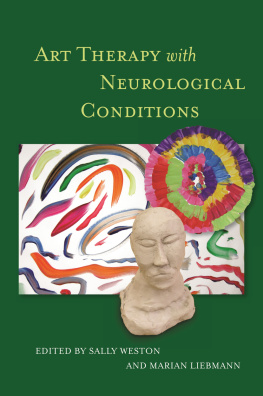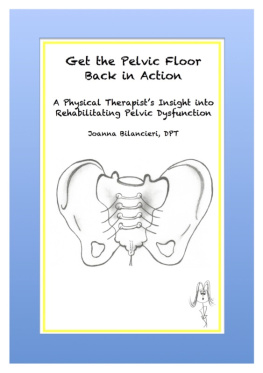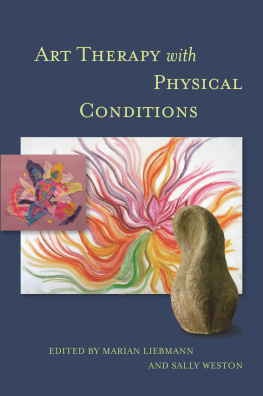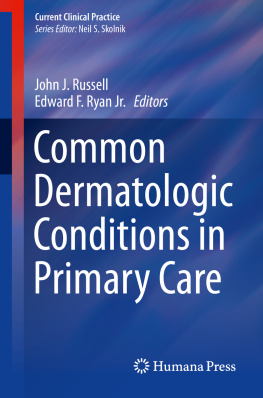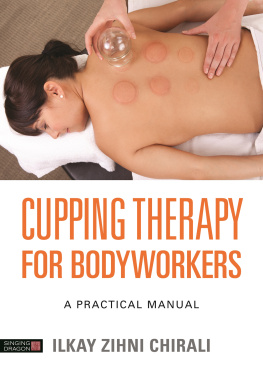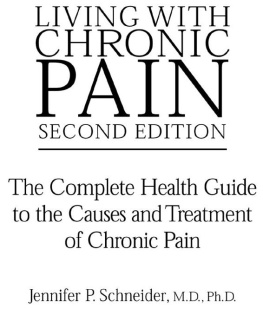
If anyone needs confirmation that art therapy is the approach to use in the treatment and recovery of neurological conditions this is the book to read. Within these chapters the author practitioners convey the extraordinary range and adaptation of interventions available that enable increased access to therapy for patients, carers and public services considering employing art therapists. I was transfixed throughout both by the compassion of the case studies but also the authority of knowledge embedded in each chapter. A truly pioneering work, showing how the development of art therapy knowledge and expertise has risen to a sophisticated level of authority in delivery and awareness of the therapeutic contribution it can make to such a complex subject.
Kate Rothwell, Art Psychotherapist, Head of Arts Therapies in the Forensic Directorate of the East London Foundation NHS Trust, Art Psychotherapist H.M.P Grendon
Art Therapy with Neurological Conditions is an interesting book, ambitious in its aim as it covers diverse and complex clinical areas, giving moving personal stories throughout and emphasizing the importance of relationships to recovery. Connecting much of the work are the links between neurological, emotional and cognitive aspects of art therapy, in particular the ability of art and images to activate functional plasticity, the capacity to recover by adaptation and offer a chance to emotionally heal. Some of the chapters cover topics which have had little or nothing written about them previously, such as epilepsy and learning disability (). The book acknowledges the need for more research and views the writing as initiating this through the sharing of clinical practice.
Diane Eagles, Art Psychotherapist and Older Adult Mental Health Arts Therapies Manager for CNWL (Central North West London) NHS Foundation Trust
In dealing with the diverse aspects of art therapy, the making, thinking about and working with imagery and tangible and symbolic processing, this inspired and inspiring book shows how successfully art therapists adapt their practice for people with many different neurological conditions in a variety of clinical and community settings. It will be an invaluable resource for art therapists and other professionals in this field, and a vital source of information and insight for trainee art therapists.
Deborah Gibson, MA Art Therapy Research, PG Dip Art Therapy, RATh, Art therapist, Supervisor and Lecturer
This book should be read by everyone who is interested in the interface between art therapy and neurology. It presents the underpinnings of what could develop into a new theory of art therapy.
Frances F. Kaplan, DA, ATR-BC, Art Therapist, Teacher of Graduate Art Therapy Courses, Marylhurst University, and author of Art, Science and Art Therapy
Art Therapy with Neurological Conditions
companion volume
Art Therapy with Physical Conditions
Edited by Marian Liebmann and Sally Weston
ISBN 978 1 84905 349 5
eISBN 978 0 85700 911 1
of related interest
Art Therapy and Anger
Edited by Marian Liebmann
ISBN 978 1 84310 425 4
eISBN 978 1 84642 810 4
Art Therapy and Clinical Neuroscience
Edited by Noah Hass-Cohen and Richard Carr
ISBN 978 1 84310 868 9
eISBN 978 1 84642 839 5
Assessment and Outcomes in the Arts Therapies
A Person-Centred Approach
Edited by Caroline Miller
ISBN 978 1 84905 414 0
eISBN 978 0 85700 788 9
Neuroscience for Counsellors
Practical Applications for Counsellors, Therapists and Mental Health Practitioners
Rachal Zara Wilson
ISBN 978 1 84905 488 1
eISBN 978 0 85700 894 7
Art Therapy with Neurological Conditions
Edited by Sally Weston and Marian Liebmann
Foreword by Jackie Ashley

Jessica Kingsley Publishers
London and Philadelphia
Excerpt on page 101 from Jan Phillips (2010) God is at Eye Level: Photography as a Healing Act is reproduced with kind permission of Quest Books.
First published in 2015
by Jessica Kingsley Publishers
73 Collier Street
London N1 9BE, UK
and
400 Market Street, Suite 400
Philadelphia, PA 19106, USA
www.jkp.com
Copyright Jessica Kingsley Publishers 2015
Foreword copyright Jackie Ashley 2015
All rights reserved. No part of this publication may be reproduced in any material form (including photocopying or storing it in any medium by electronic means and whether or not transiently or incidentally to some other use of this publication) without the written permission of the copyright owner except in accordance with the provisions of the Copyright, Designs and Patents Act 1988 or under the terms of a licence issued by the Copyright Licensing Agency Ltd, Saffron House, 610 Kirby Street, London EC1N 8TS. Applications for the copyright owners written permission to reproduce any part of this publication should be addressed to the publisher.
Warning: The doing of an unauthorised act in relation to a copyright work may result in both a civil claim for damages and criminal prosecution.
Library of Congress Cataloging in Publication Data
A CIP catalog record for this book is available from the Library of Congress
British Library Cataloguing in Publication Data
A CIP catalogue record for this book is available from the British Library
ISBN 978 1 84905 348 8
eISBN 978 0 85700 912 8
Contents
List of Figures
Foreword
When my husband, the broadcaster Andrew Marr, suffered a serious stroke in 2013 he immediately knew that some parts of his life were lost forever. He was never likely to run again hard to hear for a man who regularly pounded for an hour round Richmond Park. Even worse, he believed he would never paint or draw again, because his left hand was left useless after the stroke.
He was delighted, not long afterwards, to realise that one of the many therapists who called to see him in Charing Cross hospital was an art therapist. Stroke patients were encouraged to draw and to paint from very early on, and despite the motor difficulties they experienced, with the help of a therapist they could achieve some very positive results.
Andrew took up the challenge, working both with the art therapist, and by himself, drawing in a notebook and on his iPad. Drawing and painting had always been a huge part of his life: every holiday we ever had together was spent trying to drag him away from his oil paints after too many hours in the sun at his easel. Now art was giving him something more: it was no longer just a hobby, it was a means of dealing with what had happened to him.
One of his earliest drawings, post-stroke, was of himself, wobbling around as he tried to stand, supported by a physiotherapist. The image had been captured by a member of staff with a camera, and he had then drawn himself from the photograph. His thinking was that during those early days in hospital he felt vulnerable and quite scared, but that drawing his vulnerability helped him to make sense of it.
And so it has proved for many survivors of stroke or other brain injuries. The science is there to show that parts of the brain light up when people are enjoying art. It is undoubtedly helpful in making emotional adjustments to a new and maybe disabled life.
Once Andrew left hospital, he decided to write a book about drawing and what it has meant to him throughout his life. Part of it, clearly, is distraction. He wrote that drawing involves being completely involved in an activity for its own sake. The ego falls away. Time fliesIt isnt chilling. It isnt relaxingIt sounds a lot like meditation, a method of self-mastery, developed over many years.
Next page
